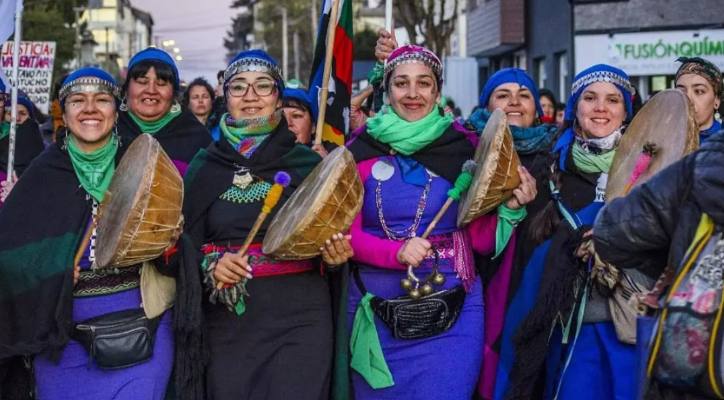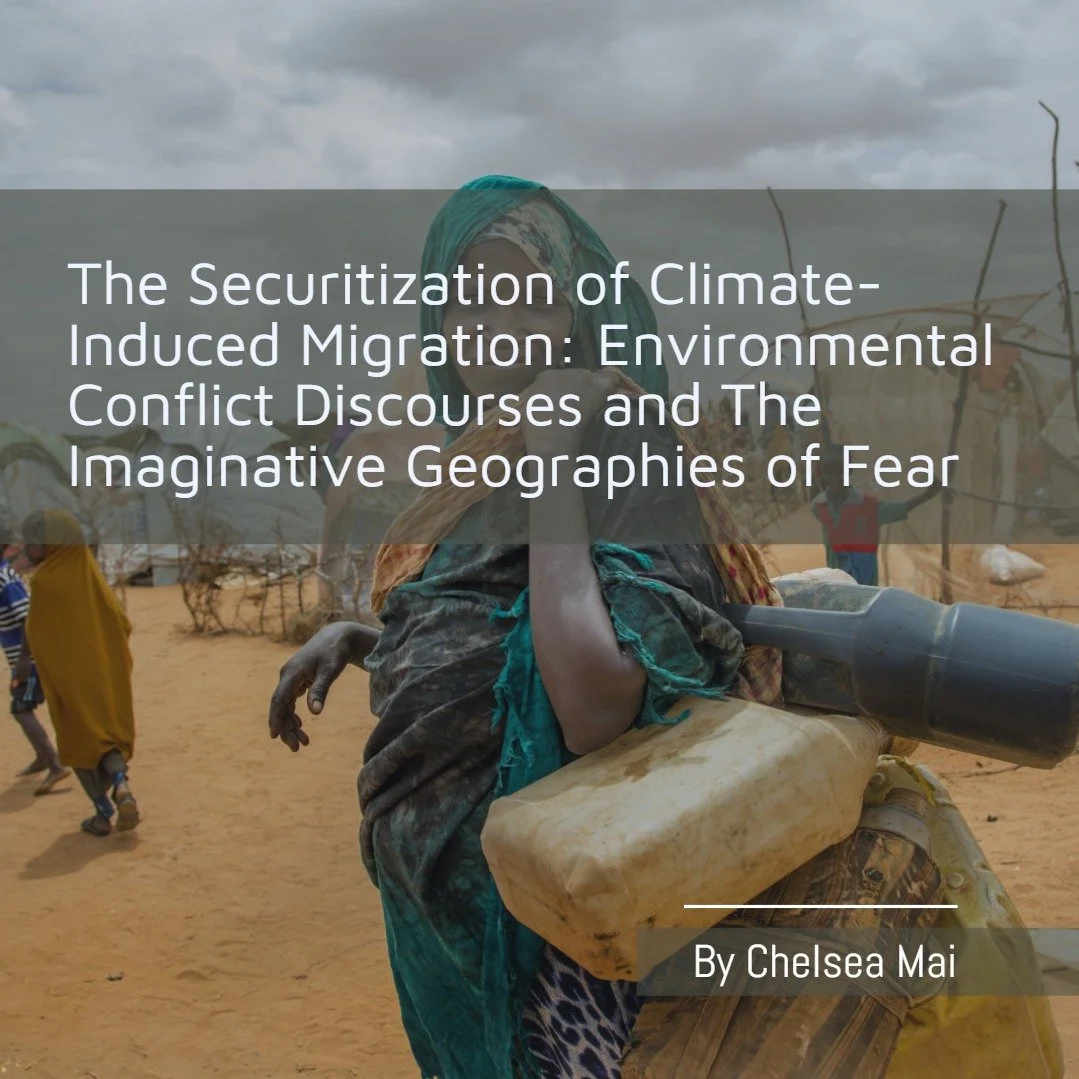This article explores the complex dynamics of transgender migration to Argentina, highlighting its historical reliance on immigration and its progressive legislation on transgender rights. Despite Argentina's reputation as a haven for transgender migrants fleeing persecution, they face significant challenges upon arrival, including intersectional discrimination that stems from both their migratory status and gender identity. The article examines the socio-political factors driving south-to-south migrations, the harsh realities of integration, and the systemic inequalities that hinder transgender migrants' access to rights, healthcare, and protection despite Argentina's advanced legal framework.
Andrea Di Marcoberardino
Introduction
Historically, migrants have heavily influenced Argentina, relying on them to develop and build its nation and national identity. [1] The constitution, crafted in 1853 and still in force today, states in Article 25 that the federal government promotes European immigration and the immigration of whoever wants to invest in the country.[2] Much has changed since the end of the 19th century, like the composition of Argentinian society and the world. However, Argentina still receives thousands of migrants annually, mostly south-to-south migrants (migrants that move from countries of the global south to other countries of the global south). Despite suffering continuous economic crises that make life inside the country difficult even for Argentinians, there are several reasons migrants from the region chose to go there. When analysing the causes behind transgender migrations towards Buenos Aires, especially when the subjects are forced to relocate for personal security concerns, the trans community considers Argentina a safe choice for its low level of criminality compared to other countries of the region and for its progressive legislation when it comes to transgender rights. Still, several studies, interviews, and data show that transgender migrants in Argentina suffer from violence, marginalisation and intersectional discrimination, both for their migratory conditions and for their gender identity.
South-to-South Transgender migrations
Transgender migrants mostly arrive in Argentina through south-to-south migrations, benefitting from lighter controls due to the MERCOSUR and the Andean Community (CAN), two multilateral agreements among countries of South America and the Andes, seeking protection from persecution, violence, and discrimination. Although refugee movements are a tiny portion of all migratory movements worldwide, the burden of asylum seekers falls heavily on the Global South. [3] In South America, Argentina and Brazil represent the most significant receiving countries.[4] Furthermore, as noted by Benavides Llerena and Chávez Nuñez, in the last decade, intraregional migrations in South America have been characterised by several factors: work, economy but also socio-political, and cultural factors. [5]
In 2018, Oscar Lopez wrote an article interviewing multiple organisations that provide services to lesbians, gays, bisexuals, transgender and queer (LGBTQ) asylum seekers in Argentina. Lopez noted that the number of people requiring assistance increased while the country's economic condition worsened.[6] This confirmed that the reasons behind trans migrations towards Argentina were not mainly financial. While no official data is issued on the actual number of LGBT+ asylum seekers in Argentina, the analyses of people working in migration centres and of academic studies related to the subject have shown that while the general number of migrants in the country was decreasing, the number of people with not hetero-cis-normativity sexual orientation and gender identity (SOGI) requiring asylum, has been increasing. Ramiro Nicolás Pérez Ripossio, in his study on the trans community living in the Metropolitan Area of Buenos Aires (AMBA), noted that when talking about transgender migrants from Latin America seeking asylum in Argentina, the project and ideas of migration generated during their childhood and puberty when generally the transgender individuals started to understand that their biological sex did not match their gender identity.[7] Furthermore, Ripossio identifies how trans people are the ones suffering the most discrimination among the LGBTQ+ community in the region and that while several reasons generate the idea of migration, discrimination, violence, and persecution are recurrent conditions that play a crucial role in encouraging the desire to seek asylum.[8]
Intersectional discrimination on arrival
However, it is essential to note that these challenges do not cease once the migratory journey ends. While Argentina can be considered one of the countries with the most progressive laws in terms of rights for the transgender community, the access to these rights for the migrant portion of the community and how they work to prevent discrimination and violence is a matter to be examined. Discrimination against transgender migrants is a phenomenon also present in Argentina. However, the violence faced in the country of origin differs from that encountered in the country of arrival. Upon integration into the receiving society, discrimination transforms, raising other factors created in a complex network of dominance that intersects various systems of oppression that get their base in the migratory status and gender identity. [9] When they arrive, the migratory status makes it difficult for transgender individuals to access healthcare, work and a support system. This leads them to be more marginalised and be in dangerous environments, in which the original discrimination for their gender identity, from which they were escaping, is added to the discrimination for being migrants.
Some of the roots behind the above-mentioned intersectional discrimination in Argentina can be found in worldwide trends. One can be identified in what Sayak Valencia defined as “Gore Capitalism”, meaning the advancement and systematisation of violence to generate wealth.[10] This has put human life and the body at the centre of a capitalist system characterised by brutality. Leading, in a hetero-patriarchal society, directly toward the commodification of the trans body, which gets dehumanised and transformed into “goods” for exchange. The situation of refugees is even worse because their lack of citizenship makes them cheaper “goods” and, therefore, more profitable and exploitable. Furthermore, the terrible economic situation of the country plays a crucial role in making trans migrants who live in Argentina fall into the hands of human traffickers.
Moreover, a report by the organisation OTRANS highlighted how detainment towards transgender migrants for violation of law 23737, which regulates the commercialisation of drugs, is exponentially higher in percentage than any other portion of society, with 85% of the trans-incriminated in the province of Buenos Aires (BAP) being migrants. [11] However, arbitrary detainment is not the only problem; also, inhumane, cruel and violent treatment by the hand of police, which in some cases has led to death, is highly reported by the trans-migrant community.[12]
Furthermore, In the experience of transphobia, many factors have to be taken into account. While the vast majority of transgender individuals have suffered some discrimination during their lifetime based on conservative ideology towards biological sex, how this has been violent and predominant also depends on how trans individuals self-identify themselves and how they externally appear related to their identity.[13] The case of trans migrants in Argentina falls into the worst possible framework because, in many cases, they escape from environments in which they do not have access to hormonal therapy, so their identity may be far away from the socially constructed image associated with it. A study by Sugano, Nemoto and Operario in 2006 found that Latin American and African American trans were the ones experiencing the highest level of transphobia, identifying the difference between gender identity and socially constructed images as a critical factor.[14] For these reasons, to fight transphobia, access to healthcare becomes essential, as it is also essential to grant some relief to transmigrant individuals who have had traumatic experiences before and during their journey. As María Eugenia Socías et al. highlighted in their report, Transgender individuals face social inequalities when it comes to healthcare access also regarding routine practices and other non-transition-related needs. [15] In this way, the healthcare system shifts from being a place of empowerment and satisfaction of essential needs to a place in which inequalities and discrimination are generated and reproduced for the trans-migrant community.
Conclusion
Since 2010, Argentina has significantly promoted LGBTQ+ rights by adopting the first law in the region that granted same-sex couples the right to marry and adopt.[16] Nevertheless, the persistence of large-scale discrimination against transgender individuals pushed the Argentinian Congress to pass the “Gender Identity Law”: Law 26,743 in May 2012, creating a legal framework based on equality that granted trans individuals the right to self-define their identities and have access to change their name, gender and images on all the official documents, also granting access to transition therapies through the public healthcare system.[17] However, there is still a massive lack of recognition of these rights for the trans-migrant community. This lack of recognition brings to more widespread intersectional discrimination, in which discrimination based on gender identity gets worsened by the migratory condition. The discrimination faced by trans migrants in Argentina has its roots in the country's challenging economic conditions over the last few decades. These conditions have made life incredibly difficult for many Argentinians and have forced a growing number of people into poverty and marginalised areas. Trans migrants are among the most vulnerable members of these fragile communities, being highly affected by these phenomena. Argentina needs reforms to tackle structural problems of inequalities in its society and the devastating economic crises. However, recognising that trans migrants face intersectional discrimination, and as a result, the application of law 26,743 is almost null for them could represent a starting point.
References
[1] Devoto, Fernando J. (2003), Historia de La Inmigración En La Argentina. Buenos Aires: Sudamericana.
[2] Argentinian Constitutional Congress (1853), Constitución de La Nación Argentina. available at www.derhuman.jus.gob.ar
[3] Schewel, Kerilyn and Debray, Alix (2024), Global Trends in South-South Migration, in: The Palgrave Handbook of South–South Migration and Inequality. Springer International Publishing.
[4] Schewel et al. (2024).
[5] Benavides Llerena, Gina and Chávez Núñez, Gardenia (2014), Migration and Human Rights. The Case of the Andean Community. Revista Científica General José María Córdova, 12(14): 75–93.
[6] Lopez, Oscar (2018), Fleeing Persecution, LGBT+ Migrants Seek Refuge in South America. Available at: https://www.reuters.com/article/idUSKBN1OI1MU/#:~:text=Along%20with%20Mexico%20and%20Uruguay,trans%20migrants%20as%20particularly%20vulnerable. [7 March 2024].
[7] Pérez Ripossio, Ramiro Nicolás (2022), La Migración Disidente. Ciudad Autónoma de Buenos Aires: ExLibrisTeseoPress.
[8] Pérez Ripossio, Ramiro Nicolás (2022), Migration Chains in the Diaspora of South American Transvestites/Trans Women Residents of the Metropolitan Area of Buenos Aires. Migraciones Internacionales, 13.
[9] Pérez Ripossio, Ramiro Nicolás (2020), Discriminación Hacia Migrantes Travestis y Trans En El Área Metropolitana de Buenos Aires: Condición Migratoria e Identidad de Género. Discrimination against Trans-American and Trans-American Transvestites in the AMBA: Migration and Gender Identity. Revista Punto Género: 1–24.
[10] Sayak, Valencia (2010), At the Brink of El Bordo, I Become Blade: Gore Capitalism and Feminism(s), in: Gore Capitalism.
[11] OTRANS (2017), Report on Argentina for the Third Cycle of the Universal Periodic Report (UPR). La Plata. available at http://otransargentina.org/
[12] OTRANS (2017).
[13] Lombardi, Emilia (2009), Varieties of Transgender/Transsexual Lives and Their Relationship with Transphobia. Journal of Homosexuality, 56(8): 977–992.
[14] Sugano, Eiko, Nemoto, Tooru and Operario, Don (2006), The Impact of Exposure to Transphobia on HIV Risk Behavior in a Sample of Transgendered Women of Color in San Francisco. AIDS and Behavior, 10(2): 217–225.
[15] Socías, María Eugenia, Marshall, Brandon D.L., Arístegui, Inés, Zalazar, Virginia, Romero, Marcela, Sued, Omar and Kerr, Thomas (2014), Towards Full Citizenship: Correlates of Engagement with the Gender Identity Law among Transwomen in Argentina. PLoS ONE, 9(8): 1–6.
[16] Socias et al. (2014).
[17] Socias et al. (2014).










